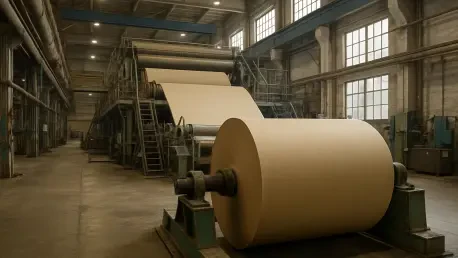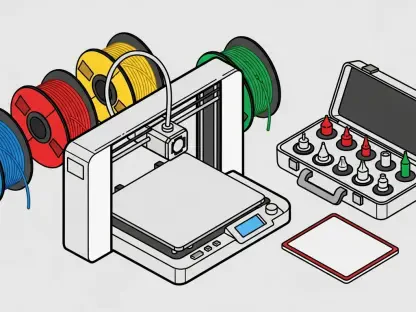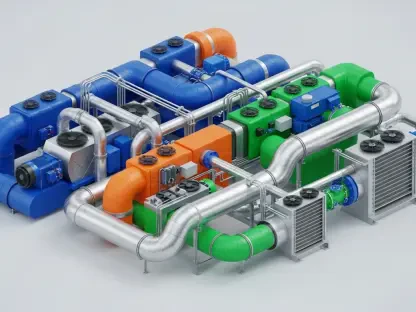The shuttering of the Pixelle Paper Mill in Chillicothe, Ohio, has sent shockwaves through a community that has long relied on the mill as an economic and cultural cornerstone, leaving nearly 800 workers jobless. With this recent closure, the city faces an unprecedented challenge in navigating the aftermath of losing a historic employer that has shaped generations. This event marks the end of an era for a place where livelihoods have been tied to paper production, and the impact is felt not just in paychecks but in the very identity of the town. The smokestack, once a symbol of industry and pride, now stands as a somber reminder of what has been lost. As Chillicothe grapples with this profound shift, questions arise about how the community will adapt, what the future holds for the displaced workforce, and whether new opportunities can emerge from this setback. This exploration delves into the economic fallout, emotional toll, and potential pathways forward for a city determined to rebuild.
Economic Fallout and Personal Struggles
The economic impact of the Pixelle Mill closure reverberates far beyond the factory gates, striking at the heart of Chillicothe’s financial stability. For a city where the mill has been a primary employer for decades, the loss of nearly 800 jobs creates a ripple effect that touches local businesses, schools, and public services. Long-time employees like Gill Garza, who dedicated 31 years to the plant, have shared heartbreaking stories of losing not just a steady income but also a way of life that supported families and fostered community ties. The sudden absence of such a significant payroll means less spending at local shops and diners, potentially leading to further layoffs or closures in other sectors. Economists predict a challenging period ahead as the town adjusts to this drastic reduction in revenue, with some estimating that the full scope of the downturn may take years to fully manifest. The urgency to find alternative sources of income and employment is palpable, as residents brace for a future that feels increasingly uncertain in the wake of this industrial collapse.
Beyond the raw numbers, the personal toll on workers and their families paints a vivid picture of loss and resilience in Chillicothe. Many employees, having spent entire careers at the mill, now face the daunting task of starting over in an unfamiliar job market. The skills honed over years of specialized labor may not easily translate to other industries, leaving individuals scrambling for retraining or relocation options. Stories of workers who planned retirements or funded children’s educations through mill wages highlight the depth of disruption caused by the shutdown. Community members have voiced concerns about mental health challenges stemming from financial stress and the erosion of social bonds formed on the factory floor. While some hold onto hope for new opportunities, others express frustration over the lack of immediate solutions, feeling abandoned by a system that once promised stability. This human dimension underscores the need for targeted support to help bridge the gap between past security and future possibilities.
Community Identity and Emotional Impact
The Pixelle Mill was more than a workplace in Chillicothe; it was a symbol of heritage woven into the fabric of the town’s identity. Its iconic smokestack, immortalized in a downtown mural, represented pride and perseverance for generations of residents who saw the mill as a testament to their collective history. Michael Throne, president of the Chillicothe Ross Chamber of Commerce, likened the closure to a funeral, capturing the profound sense of mourning felt across the community. This isn’t merely about losing jobs but about saying goodbye to a defining piece of what made the city unique. As the smokestack stands barren, it evokes memories of a bustling past now replaced by silence, leaving many to wonder how Chillicothe can redefine itself without this central pillar. The emotional weight of this transition challenges residents to honor their legacy while embracing the necessity of change in a world that no longer supports traditional industry in the same way.
The cultural void left by the mill’s closure also raises questions about how Chillicothe can preserve its sense of unity amidst such upheaval. Community events once sponsored by the mill, and the shared narratives of families connected through employment there, have long fostered a tight-knit spirit. Now, with that anchor gone, there’s a risk of fragmentation as economic pressures strain social ties. Local leaders worry about younger generations leaving for opportunities elsewhere, potentially diminishing the town’s vibrancy. Yet, there are glimmers of resolve as residents come together to support one another, whether through informal networks or organized efforts to commemorate the mill’s legacy. This duality of grief and determination shapes the current atmosphere, with many hoping to channel their shared history into a catalyst for renewal. Finding ways to maintain community cohesion will be crucial as Chillicothe navigates the uncertain road ahead, balancing nostalgia with the need for reinvention.
Looking Ahead: Redevelopment and Support Systems
Efforts to mitigate the impact of the Pixelle Mill closure are underway, with a focus on repurposing the sprawling 400-acre site for future use. The Chillicothe Chamber of Commerce is spearheading initiatives to explore options ranging from demolition to redevelopment, aiming to attract new industries that could provide jobs for displaced workers. Multiple bids have been received by the mill’s parent company, though the timeline for a potential buyer remains unclear. Michael Throne has expressed cautious optimism about transforming the space into a hub for diverse production, ideally reemploying locals swiftly. However, the complexity of such a transition cannot be understated, as aligning new business models with the existing skill sets of the workforce poses significant hurdles. Community leaders are open to industries beyond paper production, recognizing that adaptability may be the key to economic recovery. The hope is to create a sustainable future that honors the past while addressing present needs.
In parallel, immediate support for the affected workforce is being prioritized through resources like OhioMeansJobs, which has expanded its hours to assist with unemployment registration and career planning. This initiative serves as a critical lifeline for nearly 800 individuals facing sudden job loss, offering guidance on retraining programs and job searches. The scale of the challenge is daunting, but such efforts reflect a commitment to easing the transition for those hardest hit. Community organizations are also stepping in, providing counseling and networking opportunities to help workers navigate their next steps. While these measures cannot fully replace the stability once provided by the mill, they represent a practical approach to addressing urgent needs. As Chillicothe looks to the future, the effectiveness of these support systems will play a pivotal role in determining how quickly and successfully the community can rebound from this economic setback, paving the way for long-term resilience.
Path to Renewal
Reflecting on the aftermath of the Pixelle Mill closure, it became evident that Chillicothe had faced a defining moment in its history. The economic and emotional scars left by the shutdown of a nearly century-old institution lingered, with hundreds of families adjusting to a new reality marked by uncertainty. Yet, amidst the challenges, there was a concerted push by local leaders and state resources to soften the blow, as seen in the expanded services offered to displaced workers. Looking back, the initial steps taken to explore redevelopment of the mill site hinted at potential for transformation, even if the outcomes remained uncertain at the time. For Chillicothe, the journey forward involves not just replacing lost jobs but reimagining what the city can become. Community stakeholders are encouraged to continue advocating for innovative industries to settle in the area, while state and federal support could accelerate recovery efforts. Embracing adaptability and fostering collaboration will be essential as Chillicothe charts a course toward a revitalized economic landscape.









